QSDA2018 Online Practice Questions and Answers
A data architect uses the Qlik GeoAnalytics connector to determine the closest airports to cities in an existing app. The built location generates data for the airport locations. The data load editor runs the script and sees a circular reference and a synthetic key.
How should the data architect fix these issues?
A. When selecting an operation in the Qlik GeoAnalytics connector, select Only load distinct.
B. When choosing which data to load, uncheck the non-unique field in the new data tables.
C. Concatenate the airport table and the existing tables into one master tables.
D. When selecting an operation in the Qlik GeoAnalytics connector, change the CRS to "None".
Refer to the exhibit.
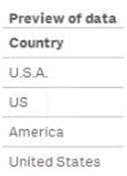
The business analyst previews some data and notices different values for the United States in the Country field. The analyst must be able to report the total sales for the United States. The data architect must fix this issue in the LOAD script.
Which function should the data architect use to fix data quality issue?
A. Switch
B. ApplyMap
C. Case
D. Replace
Refer to the exhibit.
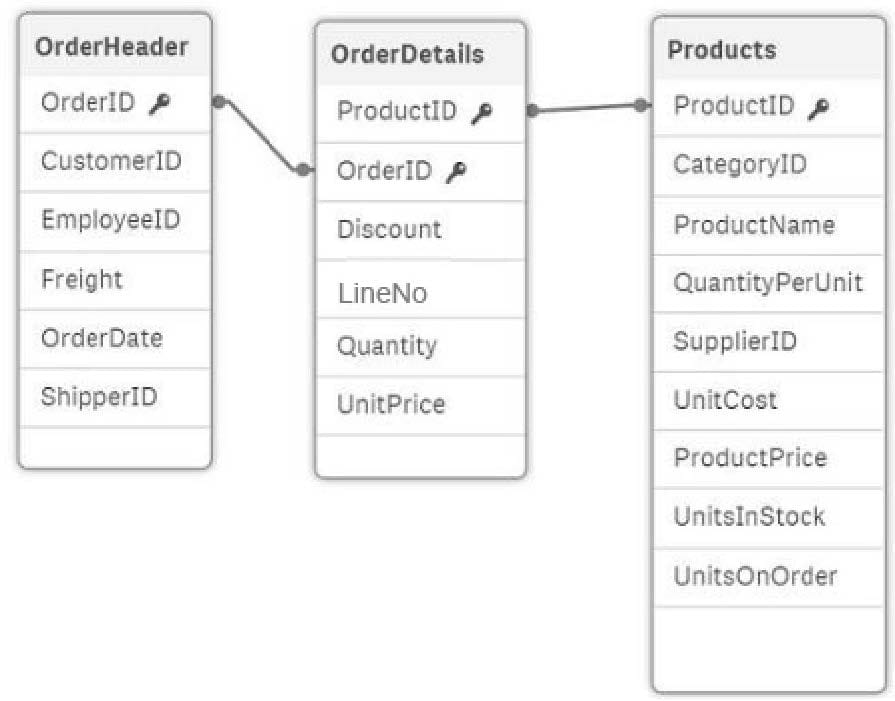
In the data load editor, the tables are loaded in the following sequence:
1.
OrderHeader
2.
OrderDetails
3.
Products
The three tables CANNOT be modified as all fields are required. A data architect must create a Cost of Goods Sold (COGS) field calculated as UnitCost* Quantity. Some products may NOT have UniCost, so the COGS value must be zero for these products.
How should the data architect meet this requirement?
A. 1. Load the Products table as the first table
2. Create a new field in the OrderDetails table: Quantity * IsNull (UnitCost) as COGS
B. 1. Perform a preceding load on the Product table
2. Create a new field in the OrderDetails table: if((UnitCost ?null() or ", 0) * Quantity as COGS
C. 1. Join the Products and OrderDetails on ProductID
2. Create a new field in the OrderDetails table: Replace(Null, 0, UnitCost) * Quantity as COGS
D. 1. Create a mapping load table as the first table from the Product table
2. Create a new field to the OrderDetails table: ApplyMap (`UnitCost_Map', ProductID, 0) * Quantity as COGS
Two companies have merged and full database integration is planned for next year. The data architect needs an interim solution to view all employee data from both companies.
The tables come from different systems
Both companies have similar Employees tables
Both tables have identifiers for Employee and some other attributes (e.g., geographical information)
The tables also have some fields that do NOT match (e.g., Social Security Number and Bank Account)
Which problem occurs when the two tables are loaded into Qlik Sense?
A. Link tables are created
B. Synthetic keys are created
C. An auto concatenation occurs
D. A circular reference occurs
Refer to the exhibit.
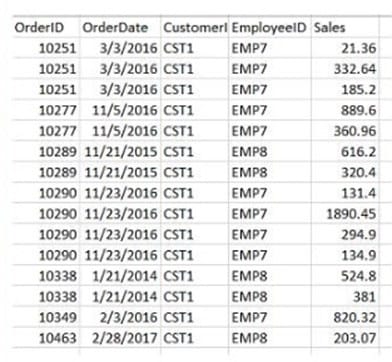
A data architect needs to build a dashboard that displays the aggregated sales for each sales representative. All aggregations on the data must be performed in the script.
Which script should the data architect use to meet these requirements?
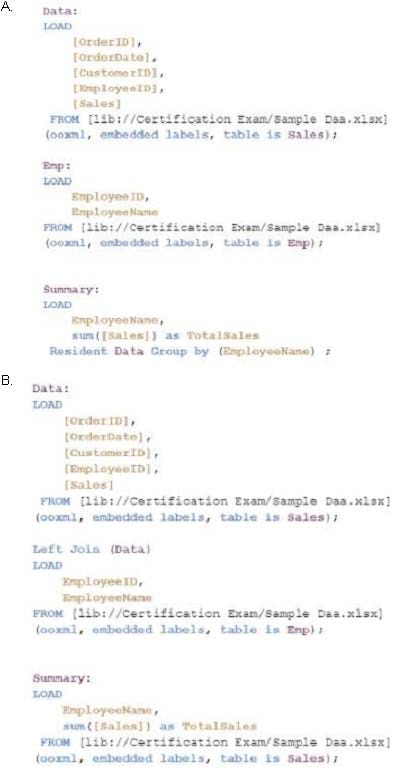
A. B.
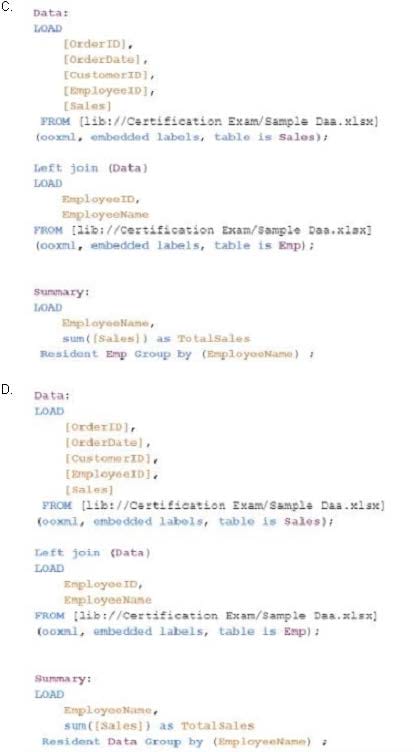
C. D.
Refer to the exhibit.
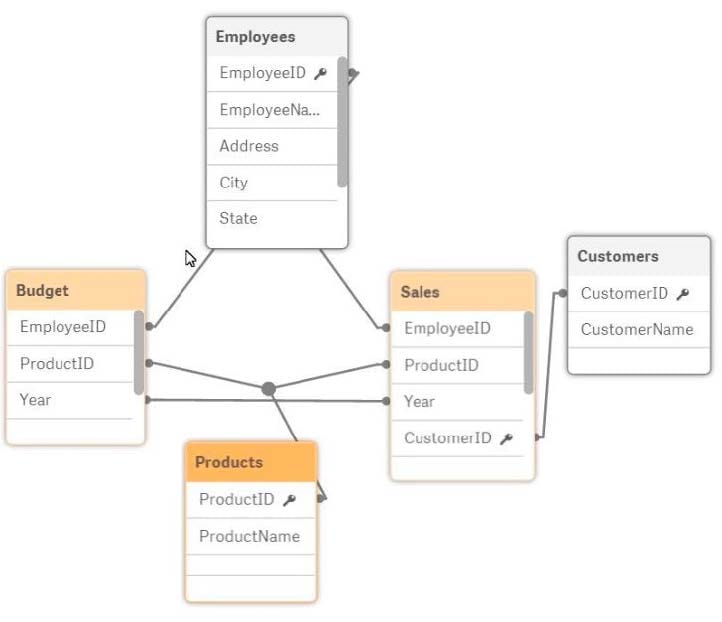
A data architect is reviewing an app that is under development. The app as NOT been published. All data has been validated in all charts and KPIs. The data architect notices that the data model has two fact tables with common field names that cause a synthetic join.
Which step should the data architect take to correct the data model without affecting the app?
A. Concatenate LOAD the data from the Sales and Budget tables to combine into a single table.
B. Create a composite key in the Sales and Budget tables that consists of the Year, EmployeeID, and ProductID
C. Perform a composite key in the Sales and Budget tables instead of loading Year, EmployeeID, and ProductID
D. Perform a mapping load for the Employees table and use ApplyMap in the Sales and Budget tables.
Payroll managers need access to the payroll system to complete a quarterly report. A username and password is required to access the payroll system through an ODBC connection. Only the system administrator should have access to the credentials and make updates as needed. Each payroll manager who access the app should only see their own employees.
Which two actions are required to set up the appropriate security? (Choose two.)
A. Make sure that the administrator creates appropriate sync rules to access the payroll system
B. Apply the correct section access to restrict data visibility
C. Make sure that the administrator applies security rules to the correct stream to restrict data visibility
D. Apply security rules to the app to restrict data visibility
E. Make sure that the administrator applies the correct security rules to the ODBC connection
A health system needs to analyze patient admission and discharges in a chart with a common date axis that looks like chart below.

The initial date table (InpatientEncounters) contains a patient admission date and discharge date for each patient encounter. The data architect will use set analysis to calculate the number of admissions and discharges in the chart.
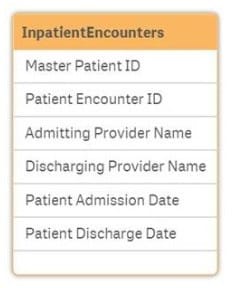
The data architect needs to design a data model with a minimum number of tables. Which tables should the data architect create to meet these requirements?
A. AdmissionCalendar, DischargeCalendar, and CommonCalendar
B. AdmissionCalendar and DischargeCalendar
C. DateLink, AdmisiionCalendar, and Dischange Calendar
D. DateLink and CommonCalendar
